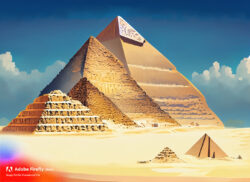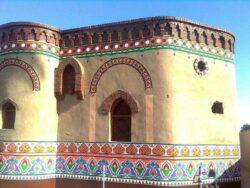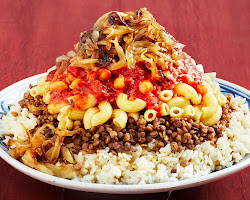Egypt's cultural tapestry is a rich and diverse blend of influences that have shaped its history, traditions, arts, architecture, music, dance, and l
Egypt’s cultural tapestry is a rich and diverse blend of influences that have shaped its history, traditions, arts, architecture, music, dance, and literature all reflect the diverse influences of its many cultures, from the ancient Egyptians to the Copts to the Islamic world, and way of life over thousands of years.
One of the most iconic forms of Egyptian art is hieroglyphics, a system of writing that uses pictures and symbols to represent words and sounds. Ancient Egyptians used Hieroglyphics for centuries, and you can still see on many of the country’s monuments and temples.
Egyptian architecture is also world-famous. The pyramids, temples, and tombs of ancient Egypt are some of the most impressive and enduring structures ever built. These monuments were not only architectural masterpieces, but they also served as important religious and cultural centers.
Egyptian music and dance are also deeply rooted in the country’s history. Traditional Egyptian music is often based on the oud, a stringed instrument, and the qanun, a zither-like instrument. Egyptian dance is known for its graceful movements and intricate footwork.
Egyptian literature is equally rich and diverse. The country has a long tradition of poetry, storytelling, and drama. Some of the most famous works of Egyptian literature include the Book of the Dead, a collection of funerary texts, and The Arabian Nights, a collection of folk tales.
Today, Egypt’s cultural tapestry continues to evolve. The country is home to a vibrant arts scene, and its artists are exploring new and innovative ways to express their creativity. Egyptian culture is a living, breathing thing, and it is constantly changing and adapting.
Here are some key elements that contribute to Egypt’s cultural tapestry:
1-Ancient Egyptian Heritage: Ancient Egypt is famous for its monumental architecture, such as the Pyramids of Giza, the Sphinx, and the temples of Luxor and Karnak.

2-Coptic Christian Heritage: Egypt has a significant Coptic Christian community, dating back to the early centuries of Christianity. Coptic churches, monasteries, and religious festivals showcase a unique blend of Egyptian and Christian traditions. The Coptic Museum in Cairo houses an extensive collection of Coptic artifacts.

3-Islamic influence: Islam became the dominant religion in Egypt during the 7th century, leaving a profound impact on the country’s culture. Mosques, such as the Al-Azhar Mosque in Cairo, serve as important religious and educational centers. Islamic architecture, calligraphy, and traditions are prevalent throughout the country.

4-Egypt’s ancient pharaonic legacy: is ingrained in its cultural identity. Egyptians celebrate Pharaohs, gods, and mythological figures in art, literature, and popular culture. The ancient Egyptian belief system, with its pantheon of deities and intricate burial practices, continues to fascinate people worldwide.
5-Nubian art and architecture: Nubian art and architecture is the art and architecture of the Nubian people, who live in southern Egypt and Sudan. Nubian art is characterized by its bright colors and its stylized representations of animals and humans.

Some more elements that contribute to Egypt’s cultural tapestry:
1-Modern Egyptian art: is the art that appear in Egypt since the late 19th century. Modern Egyptian art is diverse and includes a variety of styles, from traditional to experimental. Some of the most famous artists of modern Egypt include Mahmoud Said, and Gazbia Sirry.

2-Folklore and Traditional Arts: Egypt has a rich tradition of folk music, dance, and storytelling. Traditional art forms like Tanoura dance, Tahtib (stick fighting), and Saidi folk music showcase regional diversity and cultural expressions.

3-Culinary Delights: Egyptian cuisine reflects a blend of Mediterranean, Middle Eastern, and African influences. Staple dishes include koshari (a mix of rice, lentils, and pasta), ful medames (mashed fava beans), and kebabs.

4-Festivals and Celebrations: Egypt celebrates a variety of cultural and religious festivals. These include Eid al-Fitr and Eid al-Adha (Islamic holidays), Sham el-Nessim (spring festival), and Coptic Christmas (celebrated on January 7th). It is a colorful and lively celebrations.
5-Literature and Intellectual Heritage: Egypt has a long history of intellectual and literary contributions. Renowned Egyptian authors like Naguib Mahfouz, and Taha Hussein have made significant literary contributions, exploring themes of identity, social change, and historical reflections.
Egypt’s cultural tapestry is a testament to its rich history, diverse heritage, and the resilience of its people. From ancient wonders to contemporary expressions, Egypt continues to inspire and captivate with its cultural treasures.
You can read more about Egypt’s cultural tapestry.
Unveiling the Treasures: A Remarkable Journey through Egypt’s Cultural Tapestry

COMMENTS